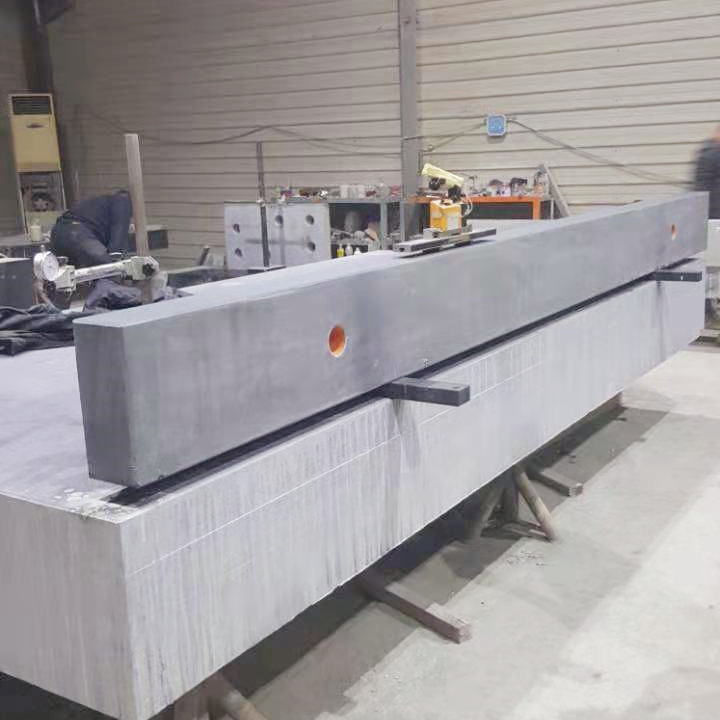ное. . 13, 2024 21:31 Back to list
check a thread gauge
Understanding and Using a Thread Gauge for Precision Measurement
Thread gauges play an essential role in various industries, especially in manufacturing and engineering, where precision is paramount. As mechanical components become more intricate, ensuring that threads fit together correctly is crucial for functionality and safety. A thread gauge is a simple yet effective tool used to measure the pitch and diameter of threaded components, ensuring that they meet specified tolerances.
What is a Thread Gauge?
A thread gauge, also known as a thread pitch gauge or a thread measuring gauge, is a specialized instrument designed to measure the pitch of screws and other threaded fasteners. The gauge comes in various forms, including handheld cards that resemble a comb, with a series of teeth of different sizes. Each tooth corresponds to a specific thread pitch, allowing users to determine the most suitable size for their application quickly.
Thread gauges can be made of metal or plastic, with metal versions often being more durable and precise. They usually feature both metric and imperial measurements, giving users the flexibility to work with various standards.
Types of Thread Gauges
There are several types of thread gauges available, each serving a specific purpose
1. Thread Pitch Gauge This type is designed to measure the pitch of a screw's thread. The pitch is the distance between adjacent threads and is crucial for identifying the correct fastener. Thread pitch gauges typically come with fine-toothed blades that can easily fit into the grooves of different threads.
2. Thread Plug Gauge This is used for checking internal threads (like those found in a nut). It ensures that the threads are cut to the correct profile and size. Plug gauges come in various sizes and are usually made from high-strength materials to withstand wear and tear.
3. Thread Ring Gauge Similar to a plug gauge, a thread ring gauge checks external threads. The gauge will fit snugly onto a threaded component to ensure it meets design specifications.
How to Use a Thread Gauge
check a thread gauge

Using a thread gauge is straightforward, but attention to detail is necessary to achieve accurate measurements.
1. Identify the Thread to be Measured Before using the gauge, it is essential to identify the thread you need to measure. Check whether it's a metric or imperial thread, as this will guide your selection of the appropriate gauge.
2. Choose the Correct Gauge Select a thread gauge that matches the suspected size of the threaded component. If unsure, start with the coarsest pitch and work your way to finer options.
3. Measure the Thread Place the chosen gauge against the thread. If the gauge fits snugly, it indicates a match. If not, try another size until you find the one that fits.
4. Check for Tolerances Most engineering applications require meeting specific tolerances. Once you have identified the correct thread size, compare it with desired specifications to ensure accuracy.
5. Document Measurements For quality assurance, it's a good practice to document your measurements. This can help to prevent mistakes in future tasks and can also serve as a reference for others working on the same project.
Importance of Accurate Measurements
Accurate thread measurement is vital across various applications. In automotive manufacturing, for instance, improperly sized threads can lead to a mechanical failure, posing safety risks. Similarly, in aerospace engineering, the precision of threaded components can affect the performance and safety of flights.
Using a thread gauge not only ensures that the right components are utilized, but it also helps in maintaining high standards of quality control. With increasing demands for customized and precision-engineered parts, the relevance of thread gauges in modern manufacturing processes cannot be overstated.
Conclusion
In conclusion, thread gauges are indispensable tools that enhance the accuracy and reliability of threaded components in various applications. By understanding how to use these gauges correctly, professionals in manufacturing and engineering can ensure compliance with specifications, thereby improving product quality and safety. Whether for small-scale projects or large industrial applications, mastering the use of a thread gauge is fundamental for anyone involved in the production of threaded fasteners.
-
thread-plug-gauge-our-promise-of-measurement-excellenceNewsAug.22,2025
-
gauge-pin-class-reflecting-quality-legacyNewsAug.22,2025
-
check-valve-types-for-high-rise-buildingsNewsAug.22,2025
-
water-control-valve-for-irrigation-systemsNewsAug.22,2025
-
gate-valve-with-soft-seal-technologyNewsAug.22,2025
-
y-type-strainer-for-oil-and-gas-applicationsNewsAug.22,2025
Related PRODUCTS









